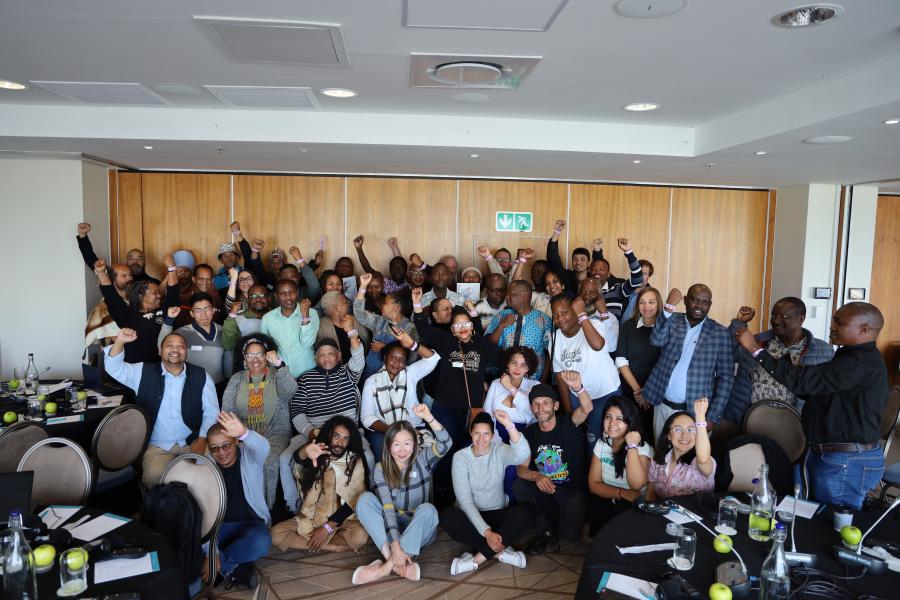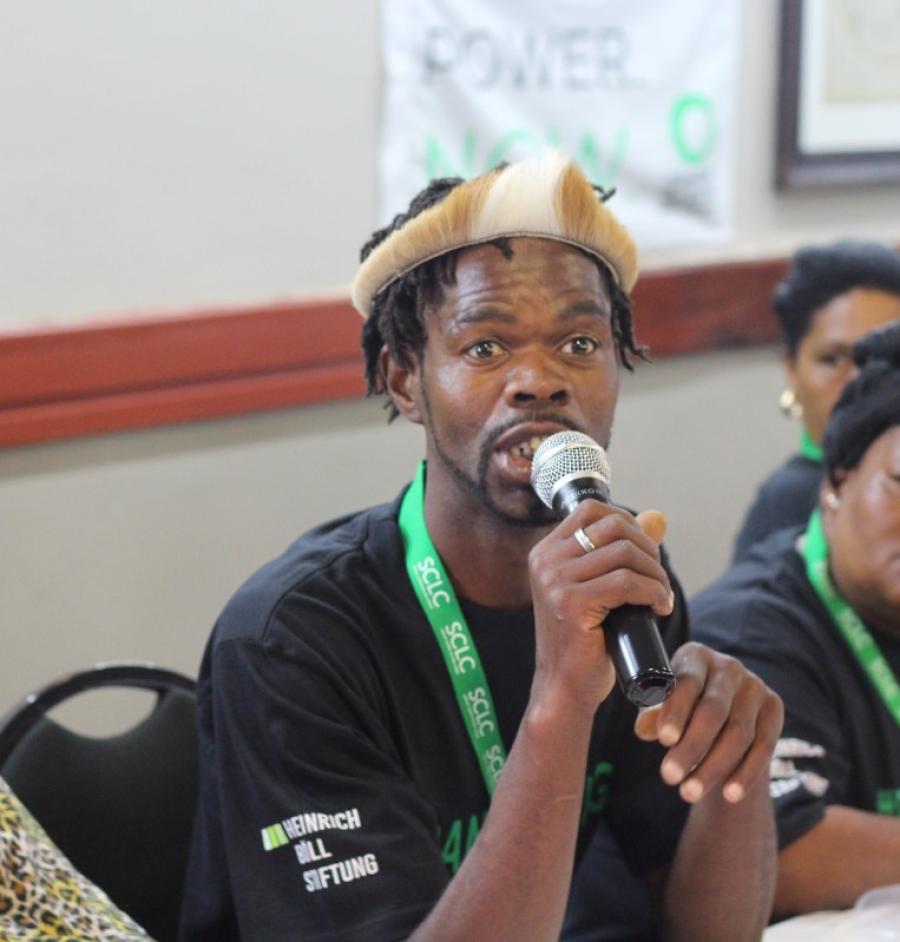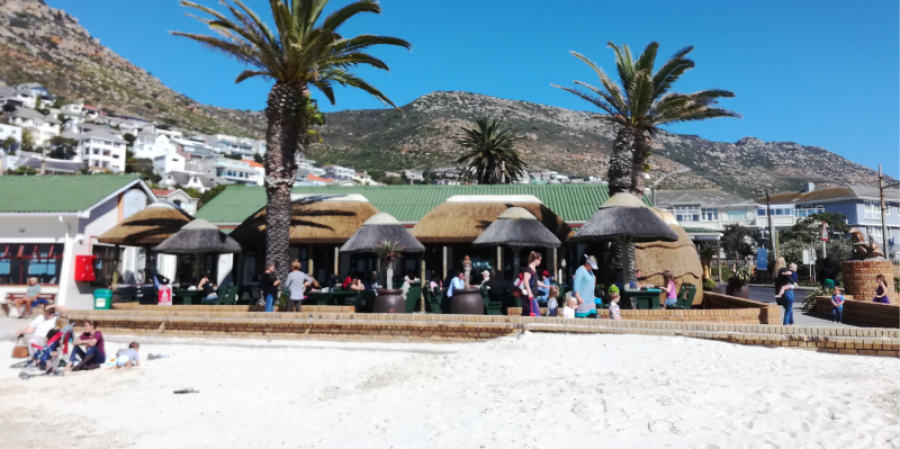A Landmark Agreement Recognizing the San’s Intellectual Property Rights
On March 24, 2003, a small group of people gathered in the Kalahari Desert of far northern South Africa to observe a momentous occasion. After years of negotiations and uncertainty, representatives of the San peoples of southern Africa joined representatives from South Africa’s Council for Scientific and Industrial Research (CSIR) to celebrate the signing of a benefit-sharing agreement for a drug being developed from a traditional mainstay of the San diet – the seemingly humble Hoodia plant.
The Hoodia has been traditionally used by the San to treat stomach pain and eye infections, among other applications. But one property in particular drew the attention of CSIR researchers back in 1995: its qualities as an appetite suppressant. On long hunting trips through the desert, San would go without food for days, chewing on the stem of the Hoodia to suppress their hunger and thirst and boost their energy. Scientists isolated the compound, called P57, in the plant that curbs hunger, and obtained a patent for it in 1996.
The San, with the help of their longtime lawyer Roger Chennells, cried foul, pointing out that the Hoodia’s unique properties were the unique traditional – and communal – knowledge of the San, passed down for centuries. Seeking acknowledgement of this fact, and of the collective ownership of this knowledge by the broader San community, they sued in 2000, beginning a long process of negotiation with CSIR that only recently ended with the celebration in the Kalahari.
“The San in the region are very pleased and proud of the achievements reached so far concerning the Hoodia negotiations,” Joram |Useb told Cultural Survival. Mr. |Useb is a regional co-ordinator for the Working Group for Indigenous Minorities in Southern Africa (WIMSA), the umbrella organization for many San communities throughout the broader region. The San, through WIMSA, gave a mandate to the South African San Council to negotiate on their behalf, he reports.
Through the concerted efforts of the Council, and Mr. Chennells, the San secured eight percent of milestone payments to be made by CSIR’s licensee, Phytopharm, as the drug is in clinical development over the next three to four years. (It has been an uphill battle – Phytopharm’s chief executive claimed that the San were initially excluded consultations because he didn’t know they still existed. The San number over 100,000 people living in Angola, Botswana, Namibia, and South Africa.) Under the agreement, the San stand to receive six percent of all royalties when the drug reaches the market. The money will be placed in a trust administered by representatives of the regional San Councils, WIMSA and CSIR. A payment of $32,000 has already been made, and the San have big plans for the windfall.
According to Mr. |Useb, WIMSA’s Annual General Assembly has discussed a range of options for using the money, with particular emphasis on bolstering education, financing San organizations, and the purchase of ancestral lands that have been taken from the San. The San plan to invest the money, and only tap into the interest generated to fund community projects. Another anticipated use is to cover legal costs incurred from cases brought by the San for human rights or other violations committed against them. There are also plans to share money from the trust with various San organizations, to sustain their programs in Angola, Namibia, South Africa and Botswana.
For years, noted Kxao Moses ‡Oma at the celebration of the agreement on March 24, “the San culture – including our traditional knowledge – has been put to use by external parties for multiple purposes, with little or no benefit accruing to the San . . . The international interest that the agreement between the San and the CSIR has aroused has helped the San umbrella body, WIMSA, to raise awareness of the need to protect and control San intellectual property.”
Now the San hope for a brighter future, with job training, education programs and a whole range of new possibilities that could be funded by the revenue they receive from the sales of any drug to come from the Hoodia. The agreement has heartened the broader community of the world’s indigenous peoples and advocates, as well, as it promises to set an important precedent for the negotiation of benefit-sharing arrangements from drugs and other products that spring forth from the deep and precious well of traditional knowledge.
As Mr. Chennells observed in CSIR’s press release, “This groundbreaking benefit-sharing agreement between a local research council and the San represents enormous potential for future bioprospecting successes based on the San's extensive knowledge of the traditional uses of indigenous plants of the area. We are optimistic that this case will serve as a sound foundation for future collaboration, not only for the San but also for other holders of traditional knowledge.”
For more information on the San, see Cultural Survival Quarterly Issue 26.1, The Kalahari San: Self-Determination in the Desert, 2002.
|
Organizations: Working Group for Indigenous Minorities in Southern Africa (WIMSA) Council for Scientific and Industrial Research The South African San Council – contactable via South African San Institute Phytopharm – P57 Program |
|
|
Sources and Relevant Articles: Celebrating the fruits of San traditional knowledge: The Hoodia plant Traditional Knowledge of the San of Southern Africa: Hoodia gordonia By Victoria Geingos and Mathambo Ngakaeaja “Bushmen Squeeze Money from a Humble Cactus” “Marginalised San Win Royalties from Diet Drug” “The San and the CSIR Announce a Benefit-Sharing Agreement for Potential Anti-obesity Drug” “Kani Negotiate Landmark Profit-Sharing Deal for Medicinal Plant” |
|
|
Indigenous Knowledge Resources: Development Gateway Indigenous Knowledge Page The UN Convention on Biological Diversity World Intellectual Property Organization – Traditional Knowledge Intellectual Property Rights: Culture as Commodity |
|



